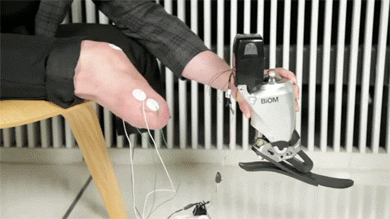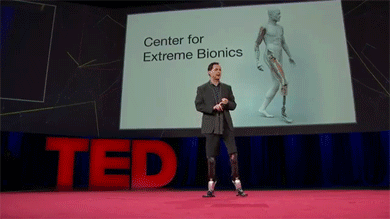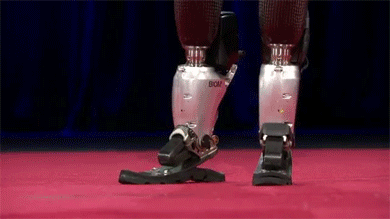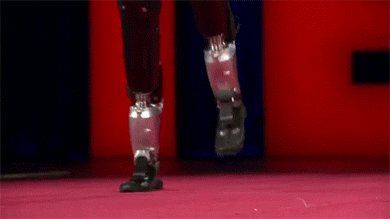Colliding Galaxies In Stephans Quintet : Will Either Of These Galaxies Survive? In What Might Be Dubbed

Colliding Galaxies in Stephans Quintet : Will either of these galaxies survive? In what might be dubbed as a semi-final round in a galactic elimination tournament, the two spirals of NGC 7318 are colliding. The featured picture was created from images taken by the Hubble Space Telescope. When galaxies crash into each other, many things may happen including gravitational distortion, gas condensing to produce new episodes of star formation, and ultimately the two galaxies combining into one. Since these two galaxies are part of Stephans Quintet, a final round of battling galaxies will likely occur over the next few billion years with the eventual result of many scattered stars and one large galaxy. Quite possibly, the remaining galaxy will not be easily identified with any of its initial galactic components. Stephans Quintet was the first identified galaxy group, lies about 300 million light years away, and is visible through a moderately-sized telescope toward the constellation of the Winged Horse . via NASA
js
More Posts from Stubborn-turtle-blog and Others
New Evidence Found which Matches Legendary Founding of the First Dynasty of China
A archaeological team from Beijing University have found new evidence that surprisingly fits the ancient Chinese histories’ accounts of the founding of the Xia Dynasty. Previously, historians had dismissed all accounts of the first, second, and third dynasties as fabrications. They were written to glorify the dynasties which came later, not to document what had really happened. But archaeological findings over the last century provided evidence that the second and third dynasties had really existed. The Shang Dynasty you likely heard about in schools. Yup, we had once thought it was a myth. Now science and archaeology may be confirming the earliest dynasty written about existed as well. Read more
My question is, is the IDA going to be a standard for spacecraft? Do we have standard ports already?
Spacewalk Friday: Installing a New "Parking Spot" on Station
This Friday, Aug. 19, two U.S. astronauts will install a new gateway for American commercial crew spacecraft at the International Space Station.

Commercial crew flights from Florida’s Space Coast to the International Space Station will restore America’s human spaceflight launch capability and increase the time U.S. crews can dedicate to scientific research.

The adapter being installed (imaged below) was launched on a SpaceX Dragon cargo spacecraft and arrived on orbit July 20. This ring is known as an International Docking Adapter, or IDA, and its main purpose is to provide a port for spacecraft bringing astronauts to the station in the future. Outfitted with a host of sensors and systems, the adapter is built so spacecraft systems can automatically perform all the steps of arrival and docking with the station without input from the astronauts.
NASA astronauts Jeff Williams and Kate Rubins will perform the spacewalk to install the equipment this Friday, Aug. 19. This will be the fourth spacewalk in Williams’ career and the first for Rubins.

Four previous spacewalks…like the one below…helped set the stage for installation of this docking adapter. During those previous spacewalks, other crew members laid hundreds of feet of power and data cables outside the space station.

On Wednesday, the robotics team using the Canadarm2 and its attached “Dextre” manipulator, will reach into the SpaceX Dragon trunk and pull out the docking adapter and position it for Friday’s spacewalk activities.

The morning of the spacewalk, while the astronauts are getting suited up, the robotic arm will position the docking adaptor near the port so that it will be ready for installation.

The two astronauts will venture outside the space station to install the first International Docking Adapter (IDA). This new adapter port will provide a parking space for U.S. Commercial Crew vehicles.
Watch LIVE!
Coverage of the spacewalk begins at 6:30 a.m. EDT on Friday, Aug. 19; with the spacewalk scheduled to begin at 8:05 a.m. EDT. Stream live online HERE.
Make sure to follow us on Tumblr for your regular dose of space: http://nasa.tumblr.com





Flat House + Atelier So-So. 鶴川の家 - Tsurukawa House. Kanagawa. Japan. photos: Flat House
And the dancer notes the ballroom














$1,200,000/11 br
Weatherford, TX

Lovelace’s friend Charles Babbage designed a concept for a machine he called the “Analytical Engine” – essentially a mechanical computer that would have relied on punch cards to run programs. He recruited Lovelace to translate some notes from one of his lectures, but while Lovelace was translating she added to the notes herself.
The notes grew to three times their original length, as Lovelace described what many call the first computer program. Because of funding issues, the machine was not built during her and Babbage’s lifetimes.
But Lovelace’s published article on the Analytical Engine later became a source of inspiration for Alan Turing’s work to build the first modern computers in the 1940s.
Women are sometimes considered outsiders in the science and technology fields, but Lovelace and many of the female computer programmers who followed her are proof that this paucity is a function of society, not capability. We forget or never learn about the female “computers” who programmed early mechanical machines in World War II, or that the women’s magazine Cosmopolitan once ran articles suggesting that women were perfectly suited for programming.
If the lack of acknowledgement of women’s contributions to science, technology, engineering, and mathematics (STEM) fields grinds your gears, then Ada Lovelace should be one of the first names you go to right that wrong.
Further reading:
Wikipedia profile
10 Things You May Not Know About Ada Lovelace
What if there were more women in tech?
Why we ALL need to celebrate Ada Lovelace Day







Crosson Architects. Hut on Sleds. Whangapoua. New Zealand. photos: Jackie Meiring
These almost remind me of Elven ruins
-
 biwerboli liked this · 1 year ago
biwerboli liked this · 1 year ago -
 phlowetry liked this · 5 years ago
phlowetry liked this · 5 years ago -
 16fahri liked this · 6 years ago
16fahri liked this · 6 years ago -
 bringmethemermaids liked this · 6 years ago
bringmethemermaids liked this · 6 years ago -
 0-nullstar-0 liked this · 6 years ago
0-nullstar-0 liked this · 6 years ago -
 fagdykefrank liked this · 6 years ago
fagdykefrank liked this · 6 years ago -
 isodil liked this · 6 years ago
isodil liked this · 6 years ago -
 almondishtofu liked this · 6 years ago
almondishtofu liked this · 6 years ago -
 tayloer123 liked this · 6 years ago
tayloer123 liked this · 6 years ago -
 smallfryingpan liked this · 6 years ago
smallfryingpan liked this · 6 years ago -
 atilla4434sblog liked this · 6 years ago
atilla4434sblog liked this · 6 years ago -
 afterthedragonflies liked this · 6 years ago
afterthedragonflies liked this · 6 years ago -
 notisaidthechicken liked this · 6 years ago
notisaidthechicken liked this · 6 years ago -
 ajc18615425 liked this · 6 years ago
ajc18615425 liked this · 6 years ago -
 sharkspaceengine liked this · 6 years ago
sharkspaceengine liked this · 6 years ago -
 shadowfoxsilver liked this · 6 years ago
shadowfoxsilver liked this · 6 years ago -
 wallsarecrumbling reblogged this · 6 years ago
wallsarecrumbling reblogged this · 6 years ago -
 thesubtleelephant-blog1 liked this · 6 years ago
thesubtleelephant-blog1 liked this · 6 years ago -
 i-love-broccolis liked this · 7 years ago
i-love-broccolis liked this · 7 years ago -
 perfectlyannoyingpersonsworld liked this · 7 years ago
perfectlyannoyingpersonsworld liked this · 7 years ago -
 zodiaccrab liked this · 7 years ago
zodiaccrab liked this · 7 years ago -
 chronocreature liked this · 7 years ago
chronocreature liked this · 7 years ago -
 ouranien reblogged this · 7 years ago
ouranien reblogged this · 7 years ago -
 eclairer-le-ciel reblogged this · 7 years ago
eclairer-le-ciel reblogged this · 7 years ago -
 movinginstero liked this · 7 years ago
movinginstero liked this · 7 years ago -
 artinwood54 reblogged this · 7 years ago
artinwood54 reblogged this · 7 years ago -
 artinwood54 liked this · 7 years ago
artinwood54 liked this · 7 years ago -
 celestom liked this · 8 years ago
celestom liked this · 8 years ago -
 stellalinguistica liked this · 8 years ago
stellalinguistica liked this · 8 years ago -
 logicallyhalfvulcan-blog reblogged this · 8 years ago
logicallyhalfvulcan-blog reblogged this · 8 years ago -
 papierfluegel reblogged this · 8 years ago
papierfluegel reblogged this · 8 years ago
Gaming, Science, History, Feminism, and all other manners of geekery. Also a lot of dance
243 posts

















